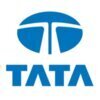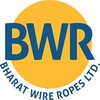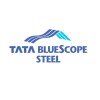Filter interviews by
Ankit Metal & Power Interview Questions and Answers
Ankit Metal & Power Interview Experiences
3 interviews found
(2 Questions)
- Q1. Technical knowledge & operation plan
- Q2. Normal question on BIS
Interview Preparation Tips
I applied via Walk-in and was interviewed before Aug 2022. There were 3 interview rounds.

(1 Question)
- Q1. Carnot's Law, C-I Diagram, Blast Furnace, Direct Reduction Process, Types Of Coal & % of C, Diff Gearbox & functions, Screw Compressor, Diff types Motors, All Thermodynamic Laws etc etc.
(1 Question)
- Q1. About Colleges, 10+2 details , family details.
Interview Preparation Tips
I applied via Walk-in and was interviewed before Apr 2021. There were 2 interview rounds.
GD was about heat value of plant and operation related
(3 Questions)
- Q1. Why should we hire you?
- Q2. Where do you see yourself in 5 years?
- Q3. Why we are going to give you this much salary you expect from us?
Interview Preparation Tips
- Operation and maintenance
Top trending discussions






Interview questions from similar companies

Assistant Manager Interview Questions & Answers
POSCO MAHARASHTRA STEELposted on 24 May 2021
I appeared for an interview before May 2020.
Interview Questionnaire
2 Questions
- Q1. Tell me something about yourself
- Ans.
I am a highly motivated and experienced professional with a strong background in management and leadership.
I have over 5 years of experience in management roles, including 2 years as an Assistant Manager at XYZ Company.
I have successfully led teams of up to 20 employees, ensuring efficient operations and high customer satisfaction.
I am skilled in strategic planning, problem-solving, and decision-making, which have cont...
- Q2. Please tell me about your 3 strengths and 3 weakness.
- Ans.
My strengths are leadership, problem-solving, and communication. My weaknesses are time management, delegation, and public speaking.
Strength: Leadership - I have a natural ability to inspire and motivate a team, and I excel at guiding others towards achieving common goals.
Strength: Problem-solving - I am skilled at analyzing complex situations, identifying potential solutions, and making informed decisions.
Strength: Co...
Interview Preparation Tips
Secondly, do home work about job profile, company and basics of your study, read your Cv and emove errors if any. Read company reviews before going for interview.
Thirdly, greet interviewer while entering room, reach 15 minutes before interview, seat calm and get you cool at new place. When answering questions do not be over smart, do not lie, do not show attitude in language. Be confident and clear in communication. Try to speak in English only. If required then use local language.

I appeared for an interview in Jun 2020.
Interview Questionnaire
1 Question
- Q1. Profile work of whole career and conceptual knowledge of various aspects...
Interview Preparation Tips

Deputy Manager Interview Questions & Answers
Tata Steel Downstream Productsposted on 13 Nov 2020
I appeared for an interview in May 2020.
Interview Questionnaire
1 Question
- Q1. About the previous professional experience.
Interview Preparation Tips

Deputy Manager Interview Questions & Answers
Tata Steel Downstream Productsposted on 10 Oct 2020
Interview Questionnaire
3 Questions
- Q1. Professional experience at each level of career
- Ans.
My career spans various roles, enhancing my skills in management, teamwork, and strategic planning across diverse industries.
Started as a Sales Associate, developing customer service skills and understanding market dynamics.
Progressed to Team Leader, where I managed a team of 10, improving sales by 20% through effective training and motivation.
Served as a Project Coordinator, overseeing project timelines and budgets, s...
- Q2. What did you do in your B. Tech project?
- Q3. How can you justify yourself that you could fit for the required position?

Assistant Manager Interview Questions & Answers
Bharat Wire Ropesposted on 2 Oct 2024
The HR policy is very bad. The notice period there is 2 months for Assistant Manager and 3 months for Deputy Manager. If you do not serve the notice period, they deduct the gross salary and not the basic salary. And they do not give any full and final breakup certificate.
Because the company I was joining had bought my notice period. But Bharat Wire did not give me any full and final breakup certificate. Due to this, the company I joined did not give me the notice period money. My amount was about 83000 rupees. My money got lost because of Bharat Wire.
I emailed HR many times. But HR did not reply to my email.
If I talk specifically about the electrical department, there is rule of two people who talk like non-technical. And they do not have the manners to talk to seniors and juniors. Only those who do not know anything and who can bear their abuses are working there.
I would especially refuse to join this electrical department as long as these people are there. Even if you join there, within a week you will feel that we took a wrong decision. And you will be mentally stressed. Because you will be tortured so much. The electrical department has a completely toxic environment.
The canteen food is absolutely bad. Even dogs would not like such food.
Bharat Wire had a very good image in the market long ago. People wanted to join this company.
but today no one wants to join Bharat Wire whoever comes to know about it. That is why before joining, people connect with people on LinkedIn and take feedback, which is also right.

I applied via Naukri.com and was interviewed in Apr 2024. There was 1 interview round.
(2 Questions)
- Q1. Technical and server related questions
- Q2. Current CTC related questions
Interview Preparation Tips

Assistant Manager Interview Questions & Answers
Captain Steel India Limitedposted on 25 Aug 2024
(5 Questions)
- Q1. About Captain steel India Limited
- Q2. TMT Ribber knowledge about Market.
- Q3. Previous company Designation of Employee
- Ans.
Senior Sales Executive
Managed a team of 10 sales representatives
Exceeded sales targets by 20% in the last quarter
Implemented new sales strategies to increase revenue
- Q4. Academic qualification of Employee and market knowledge experience gained.
- Q5. Also question previous company designation and Salary
Ankit Metal & Power Interview FAQs
Tell us how to improve this page.
Interview Questions for Popular Designations
Overall Interview Experience Rating
based on 3 interview experiences
Difficulty level
Duration
Interview Questions from Similar Companies
Ankit Metal & Power Reviews and Ratings
based on 82 reviews
Rating in categories
|
Electrical Engineer
9
salaries
| ₹2 L/yr - ₹3.5 L/yr |
|
Mechanical Engineer
7
salaries
| ₹1.8 L/yr - ₹3.8 L/yr |
|
Junior Engineer
7
salaries
| ₹1.2 L/yr - ₹2.4 L/yr |
|
Senior Engineer
6
salaries
| ₹3.2 L/yr - ₹4.9 L/yr |
|
Assistant Engineer
6
salaries
| ₹1.8 L/yr - ₹3 L/yr |

ArcelorMittal

B.C. Jindal Group of Companies

Tata Steel Downstream Products

Tata BlueScope Steel
- Home >
- Interviews >
- Ankit Metal & Power Interview Questions










